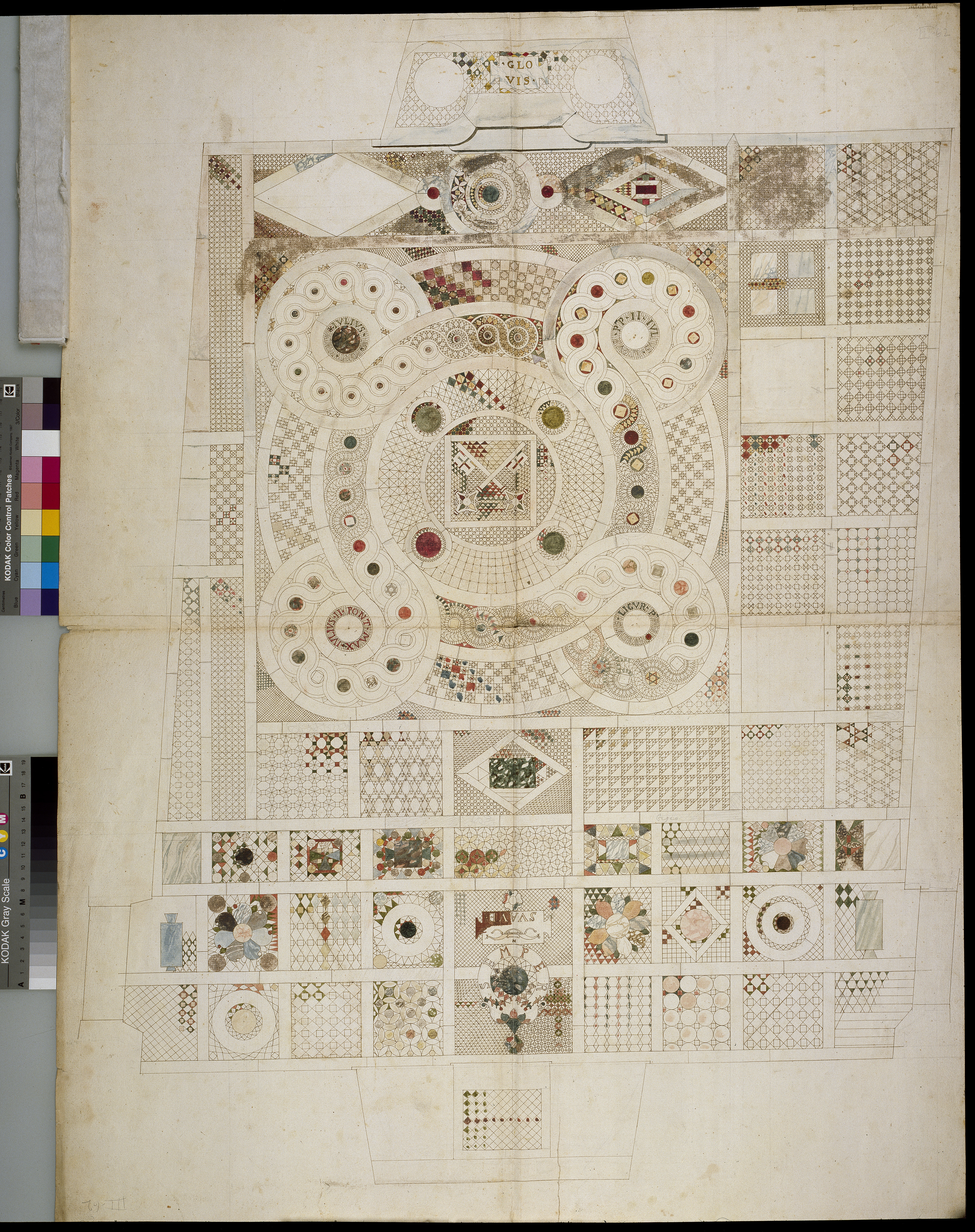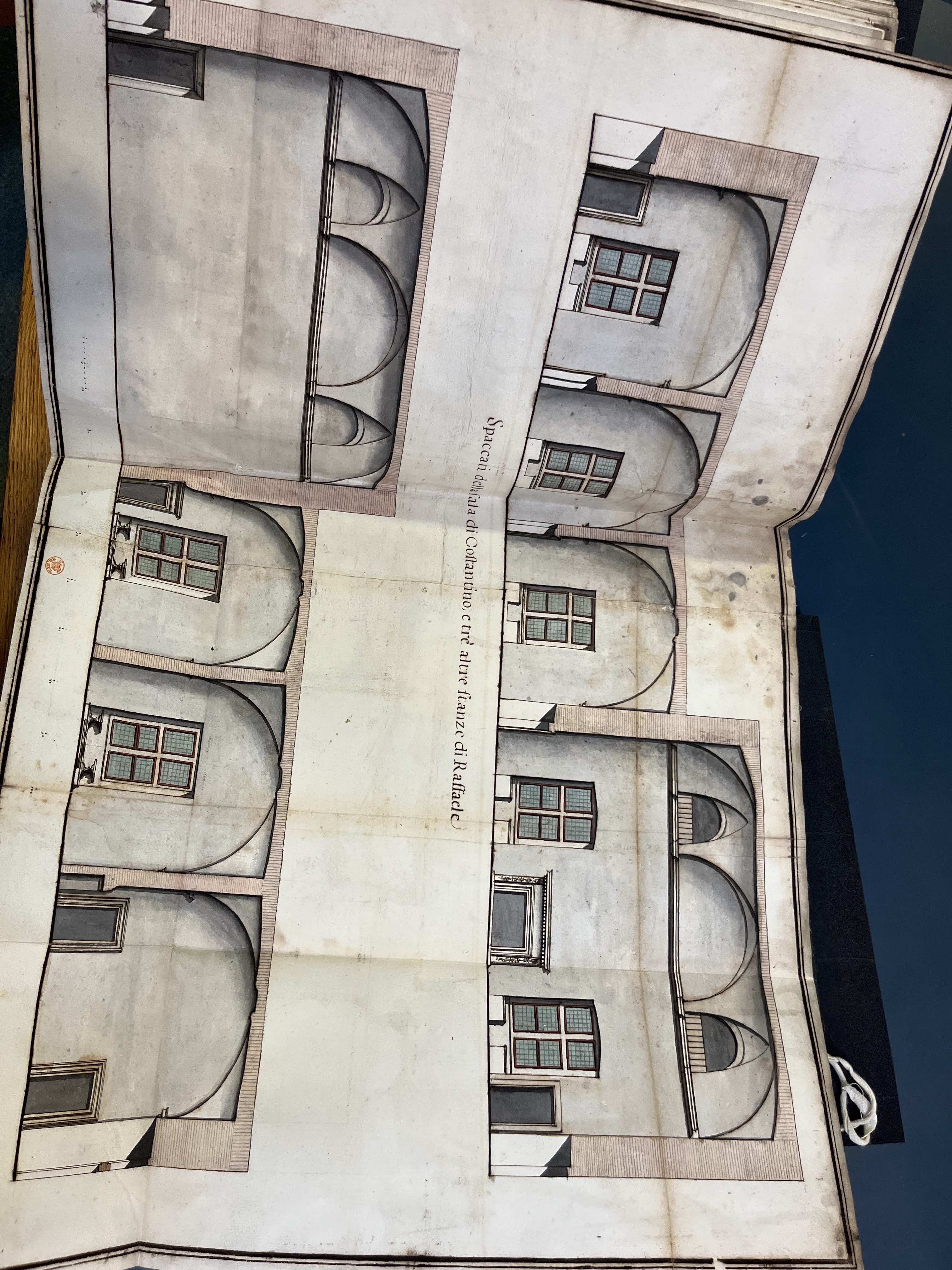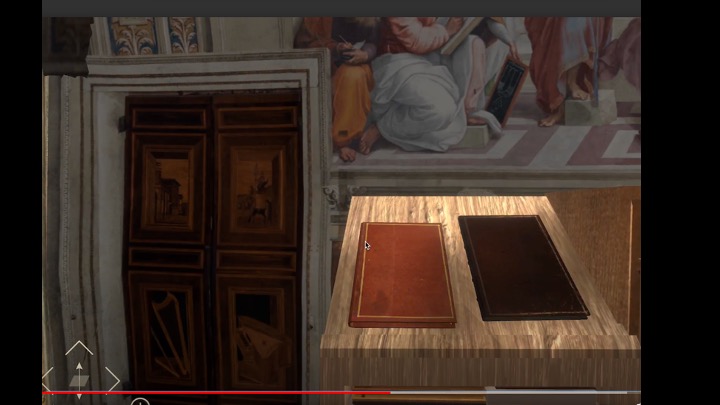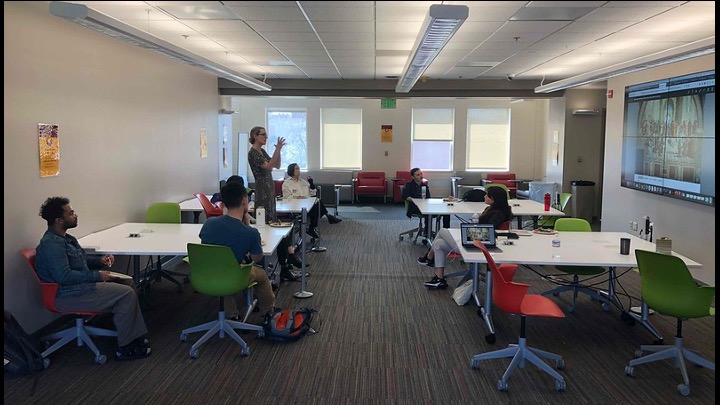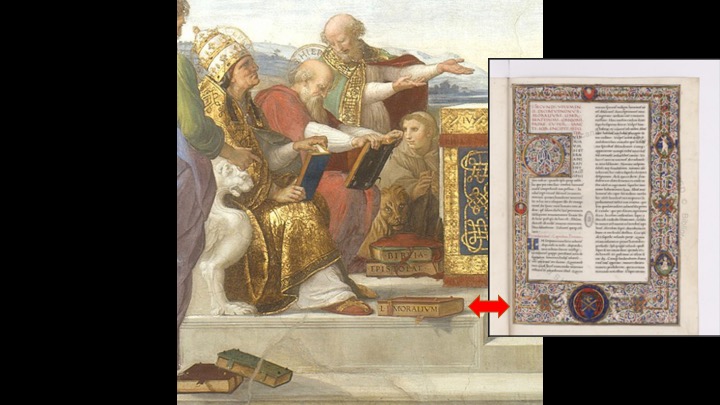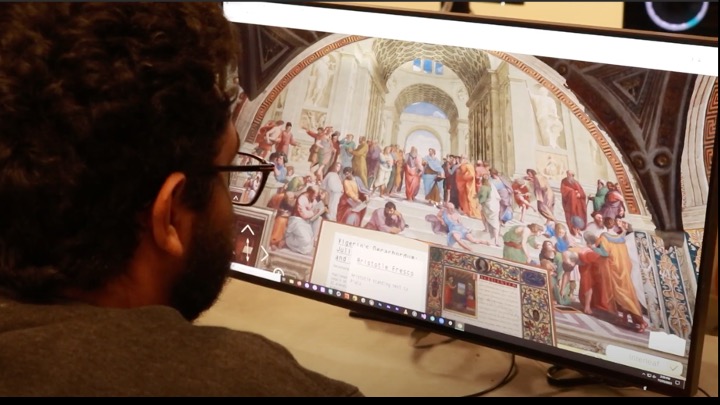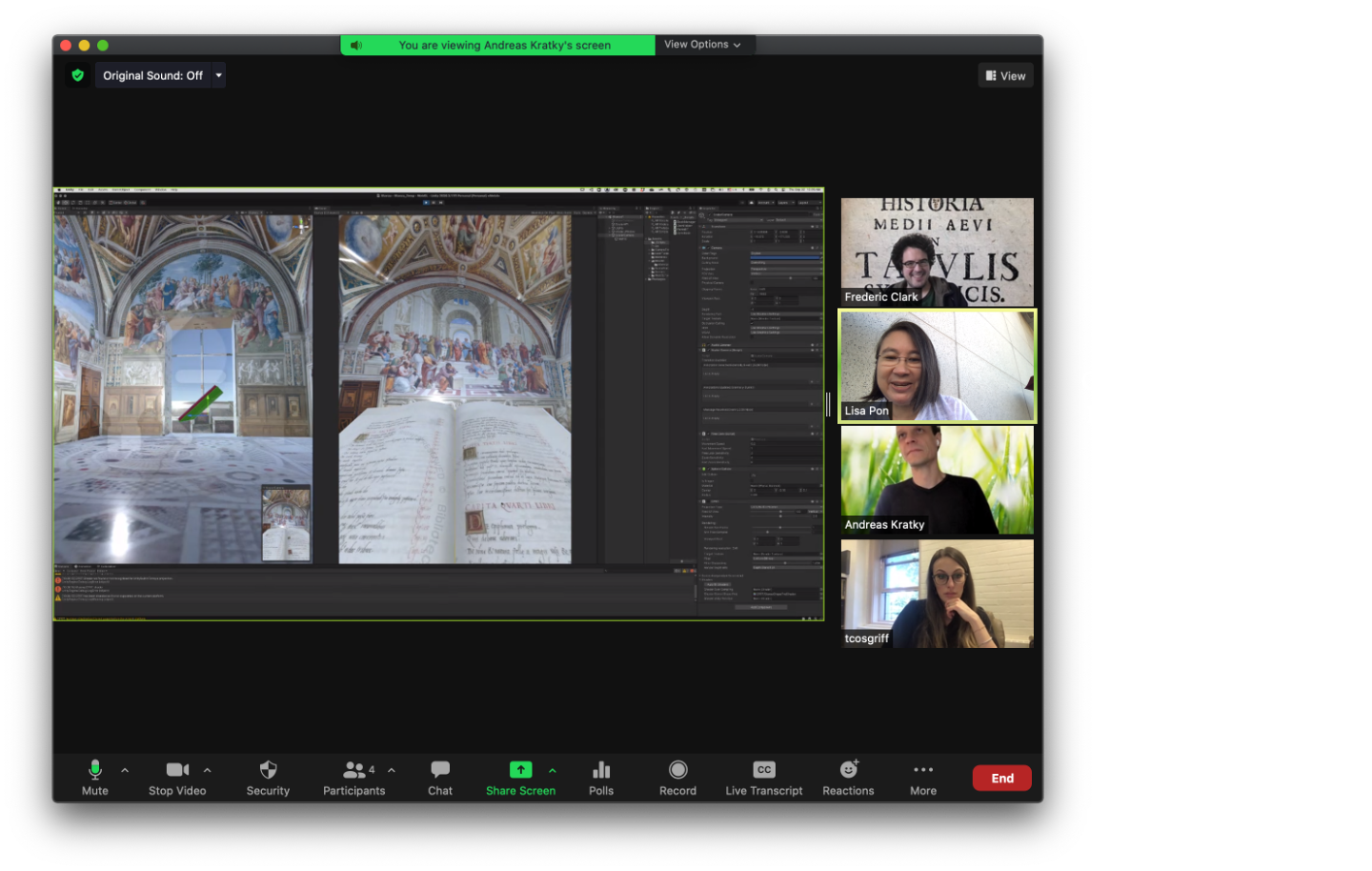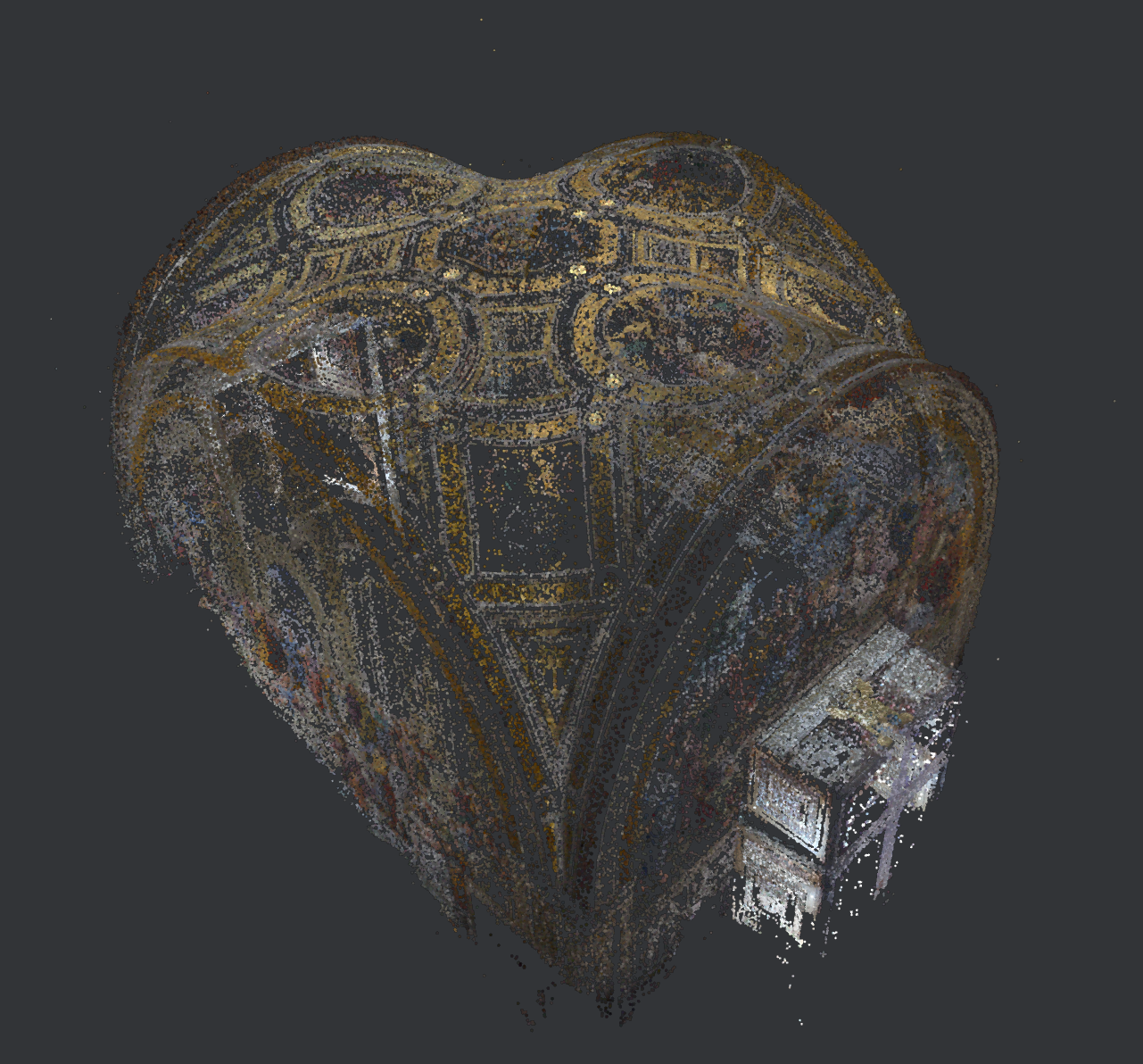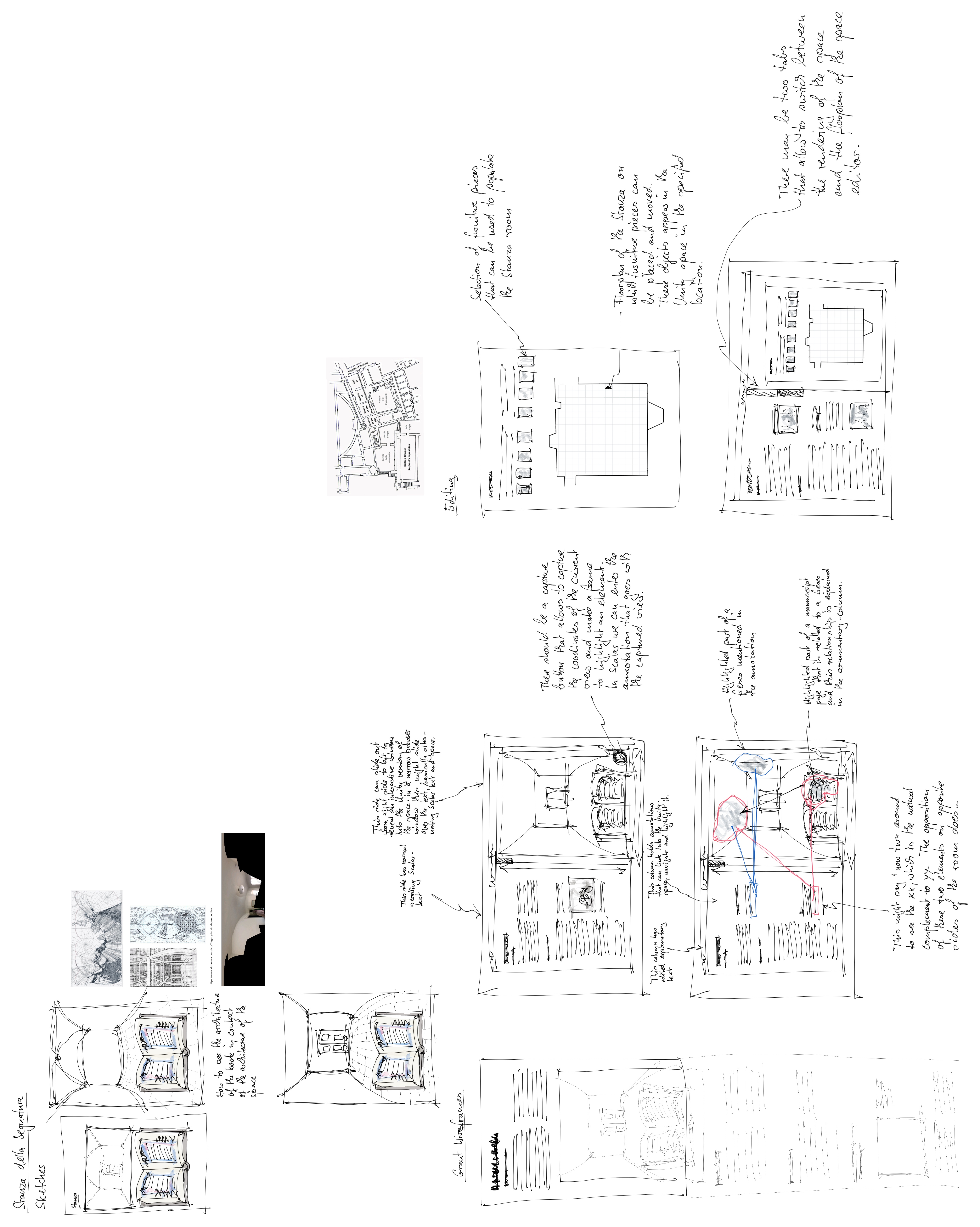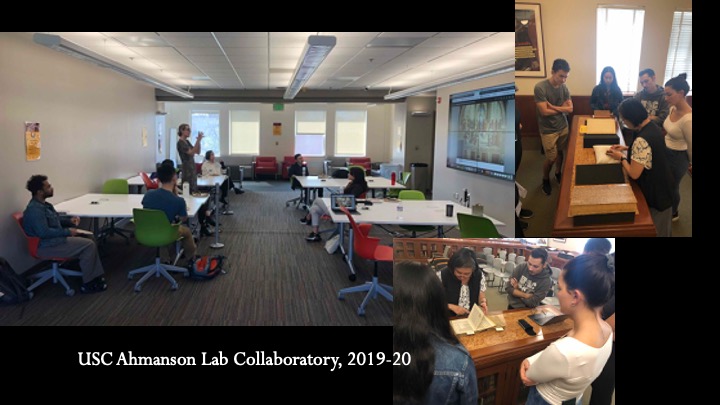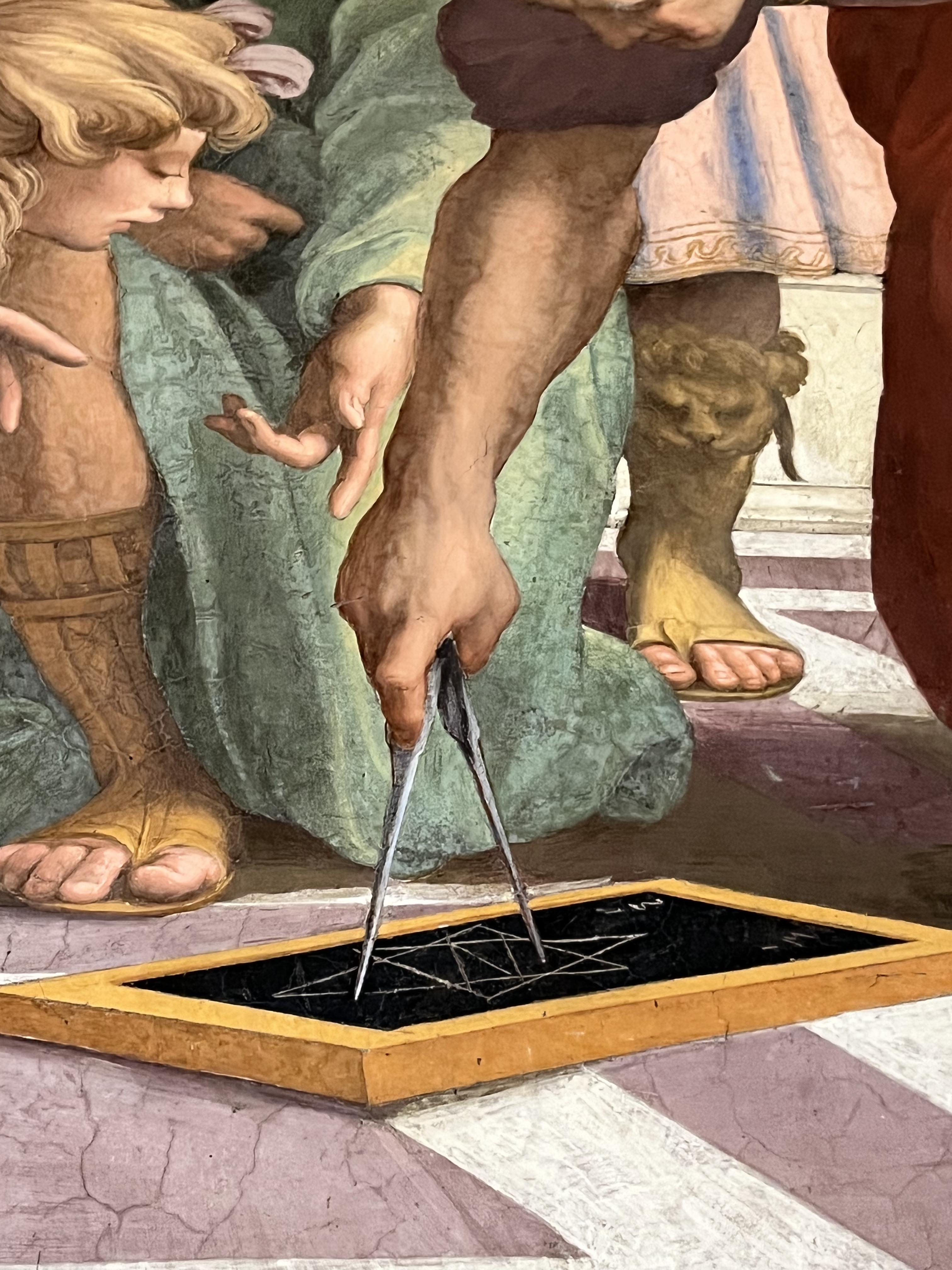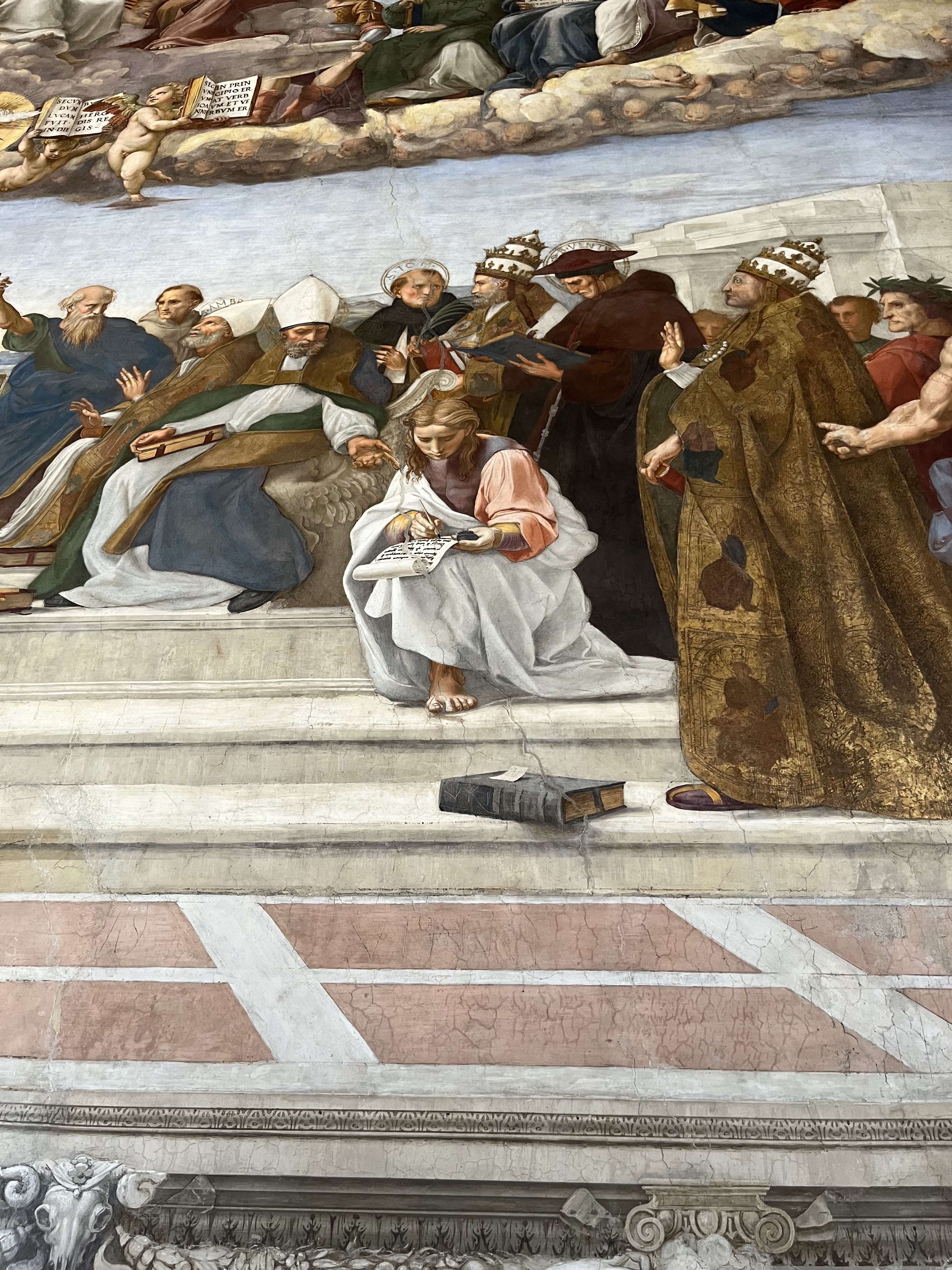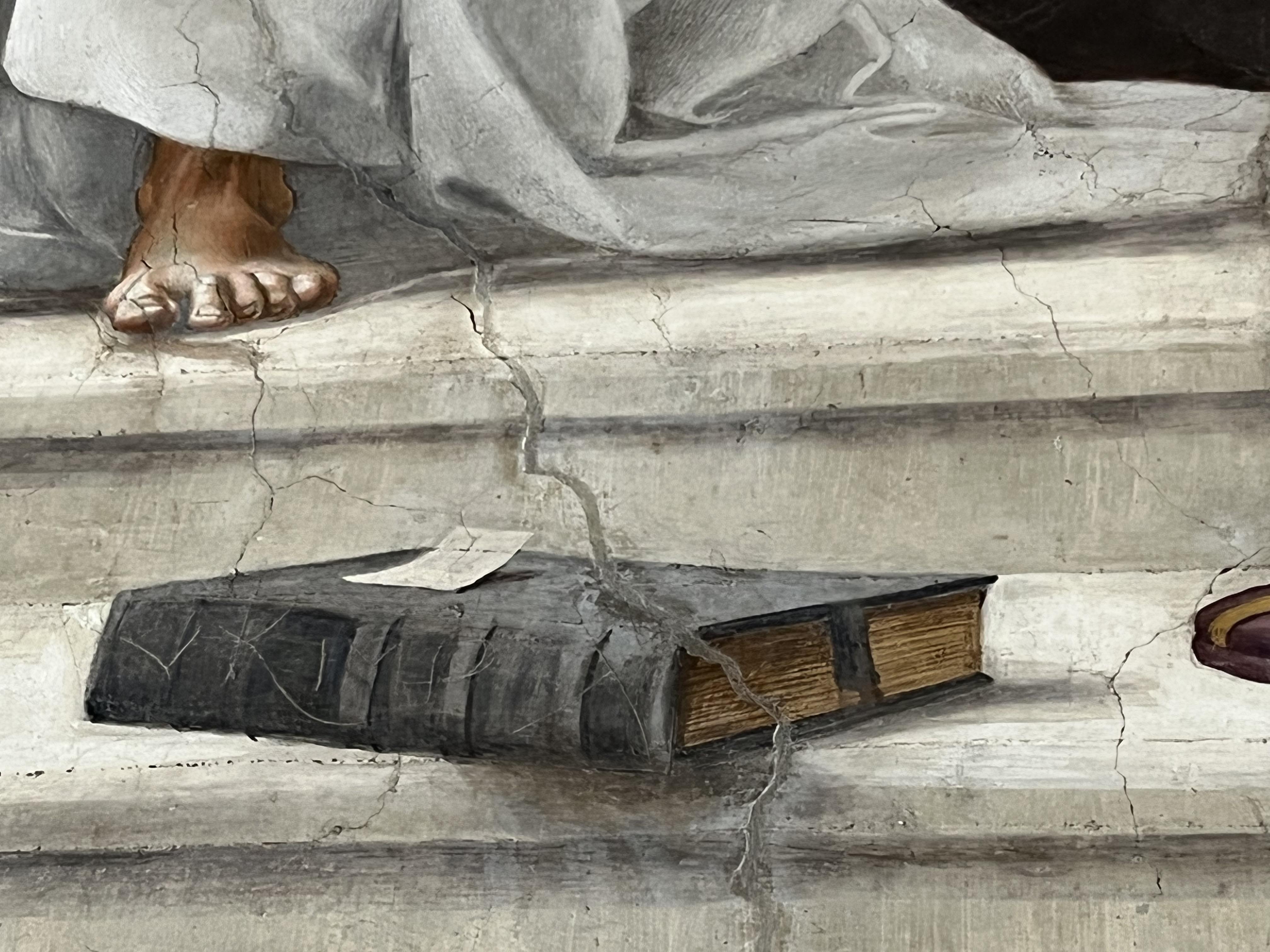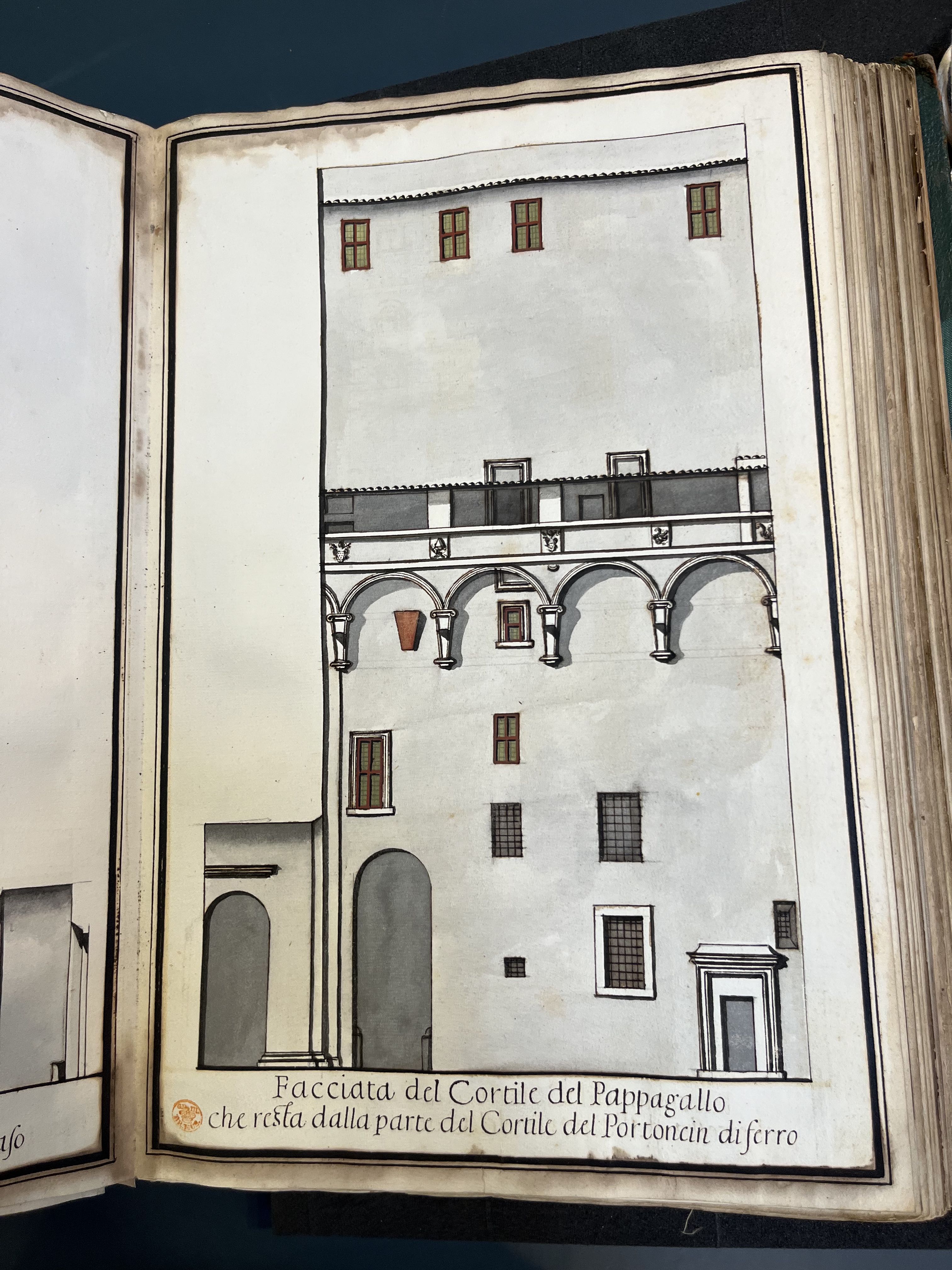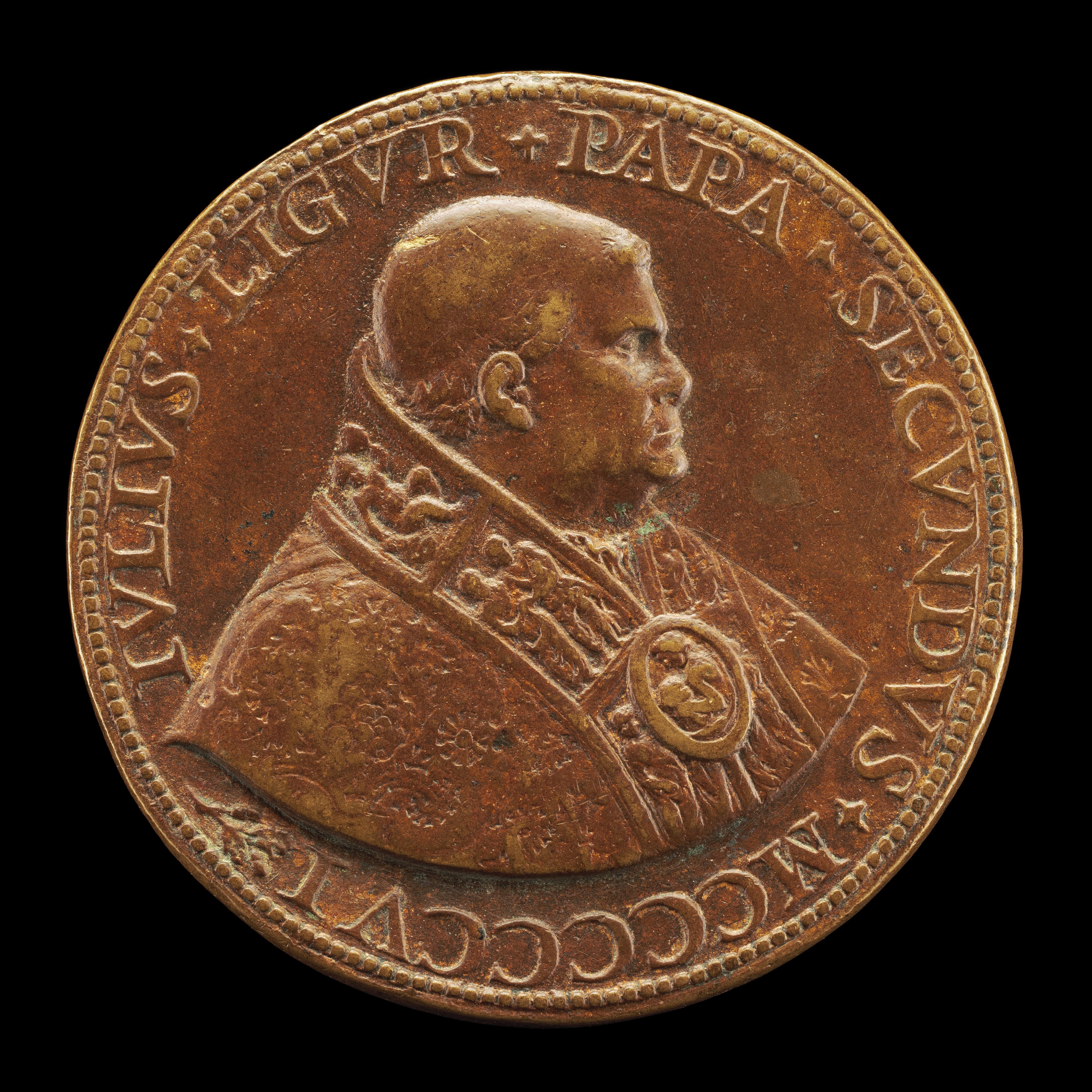
Attrib. Caradosso Foppa, Medal of Julius II, bronze, 1503. Courtesy National Gallery of Art, Washington
History best remembers Julius II as the "Warrior Pope." His reign, from 1503 to 1513, was marred by spiritual and political unrest. The pontiff famously rode into battle with papal troops and faced down threats of schism from within the Vatican's curia. Julius's legendary terribilità, however, not only describes the pope's militance, but also his literary and artistic patronage. His court hosted the peninsula's great scholars, poets, and artists -- among them, Michelangelo and Raphael, whose Vatican works are celebrated examples of Italian Renaissance art. When Raphael arrived in Rome in 1508, he began to paint the walls of the Bibliotheca Iulia, Julius II's private library, with frescoes of the School of Athens (representing Philosophy), the Disputa (Theology), the Parnassus (Poetry), and the Jurisprudence (Law), showing authors and books that Julius read. Today called the Stanza della Segnatura, this room once was the real and symbolic center of the papal apartments. After centuries of conflict, renovation, and reuse, however, it is difficult to picture the Stanza as it originally was: a vibrant site where Raphael's paintings framed Julius's collected books, and conversations about pictures and texts flourished.
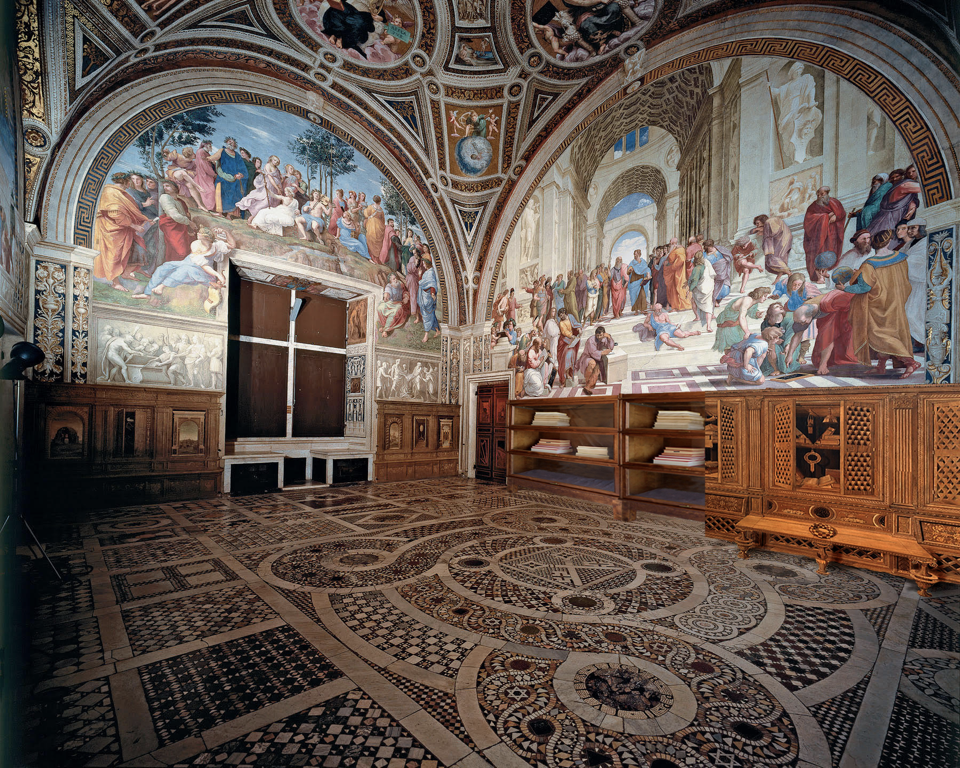
Preliminary concept: Bibliotheca Iulia Instaurata
This project re-envisions the Stanza as the library of Julius II. In so doing, it reanimates these conversations by allowing visitors today to explore the visual and literary parallels that once wedded Raphael's magnificent paintings to the books that were shelved below them. Designed for students, scholars, and curious explorers alike, the platform is an immersive educational environment, allowing users to step into the shoes of the Renaissance scholars, diplomats, and prelates that once visited the space. We invite you to join this digital Stanza as reader, viewer, and interlocutor, to peruse its histories, and to reconsider its contents. What does the Bibliotheca Iulia reveal about word and image in sixteenth-century Rome? And what might these conversations tell us about learning, then and now?
The Stanza della Segnatura in the Vatican Palace Complex
The room we call the Stanza della Segnatura was at the heart of Pope Julius II's plans for the medieval Vatican Palace. This was the second of three small, vaulted chambers on the palace's third floor, which Julius had chosen, after his election as pope, to take and remake as his personal apartments. The structure of this wing of the palace, built in the mid-1400s by Pope Nicholas V, was renovated, likely by Julius' favored architect, Donato Bramante, and painting there must have begun by late 1508: the twenty-six-year-old Raphael, newly arrived in Rome, received his first payment for painting in what the receipt calls "the vaulted room in the middle" on 13 January 1509. After completing the Stanza della Segnatura in 1511, Raphael was commissioned to paint the two flanking rooms as well, first the one to the east, the Stanza d'Eliodoro, and then the one to the west, the Stanza dell'Incendio, both named after the frescoes Raphael painted in them. At the time of his death in 1520, Raphael was painting the larger room at the east end of this wing, the Sala di Costantino, for Julius' successor, Pope Leo X.
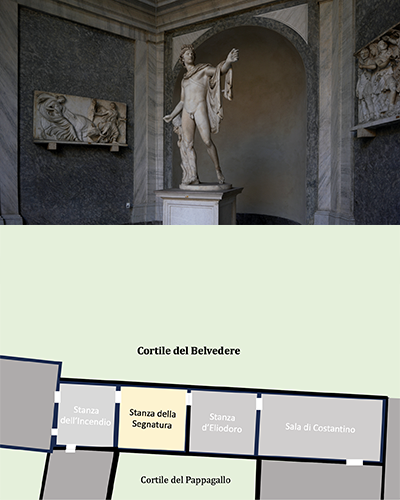
All three rooms had windows on their north walls, allowing views onto another major building project Julius had initiated, the Cortile del Belvedere, a terraced courtyard designed by Bramante to stretch a thousand feet from the Vatican Palace to another fifteenth-century structure, the Villa Belvedere. Raphael's painted Parnassus, with its muses and music-making Apollo, frames this view towards the Villa Belvedere where in 1511 Julius installed ancient sculptures such as the Apollo Belvedere. The pope added windows to the south walls of the Stanza della Segnatura and the adjoining Stanza d'Eliodoro, opening into a small interior courtyard known as the Cortile del Pappagallo, perhaps for the aviary that he also had built in the palace.

Credit: Steven Zucker, Smarthistory
Julius's plans for the Vatican complex were ambitious, including not only these spaces but also the remaking of the nearby basilica of Saint Peter's. Raphael referenced that massive undertaking twice in his frescoes: the enormous unseen dome in the School of Athens is like the one Bramante was planning for New Saint Peter's, and the distant scene of construction on the hill behind the theologians on the left side of the Disputa reflects the ongoing work of building the new basilica.
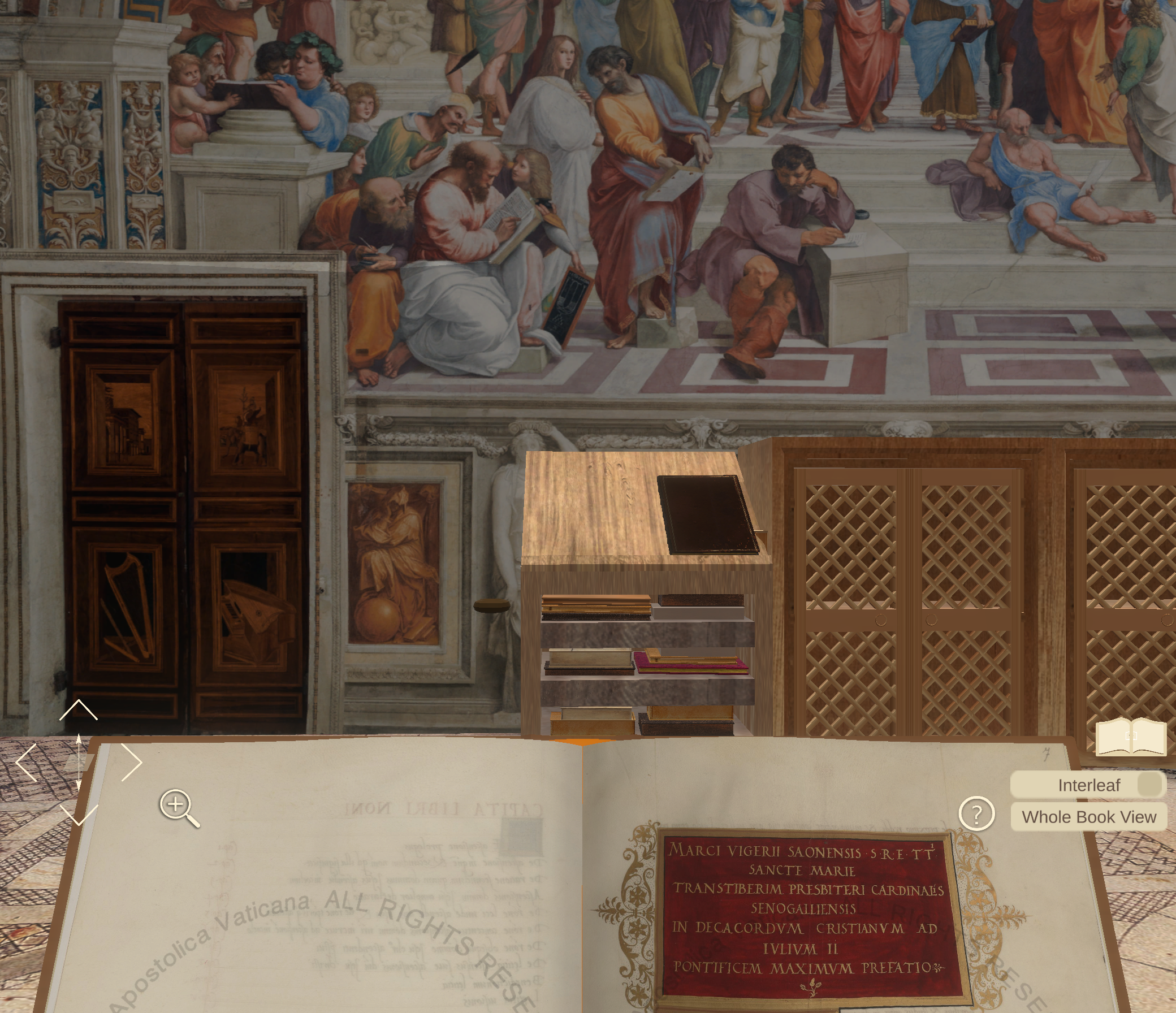
View of the digital recreation of the Stanza della Segnatura with a book in hand.
The Immersive Raphael Project is a platform to reflect on and communicate the embodied experience of a room like the Stanza della Segnatura as a functional complex: How can we understand the act of reading in the Renaissance that takes place in the room; how did discourse structures work at the time? To tackle these questions, we decided to build a tool that allows us and people with related interests to analyze and think beyond the typically isolated representations of the frescos on one side, the books on another, the Vatican architecture on yet another. How can we create a complete scene that allows us to "experience" and reflect on all of these aspects together, in the way they used to exist and were conceived? This was the foundational question that led us to create a virtual reconstruction of the room with its books and context.
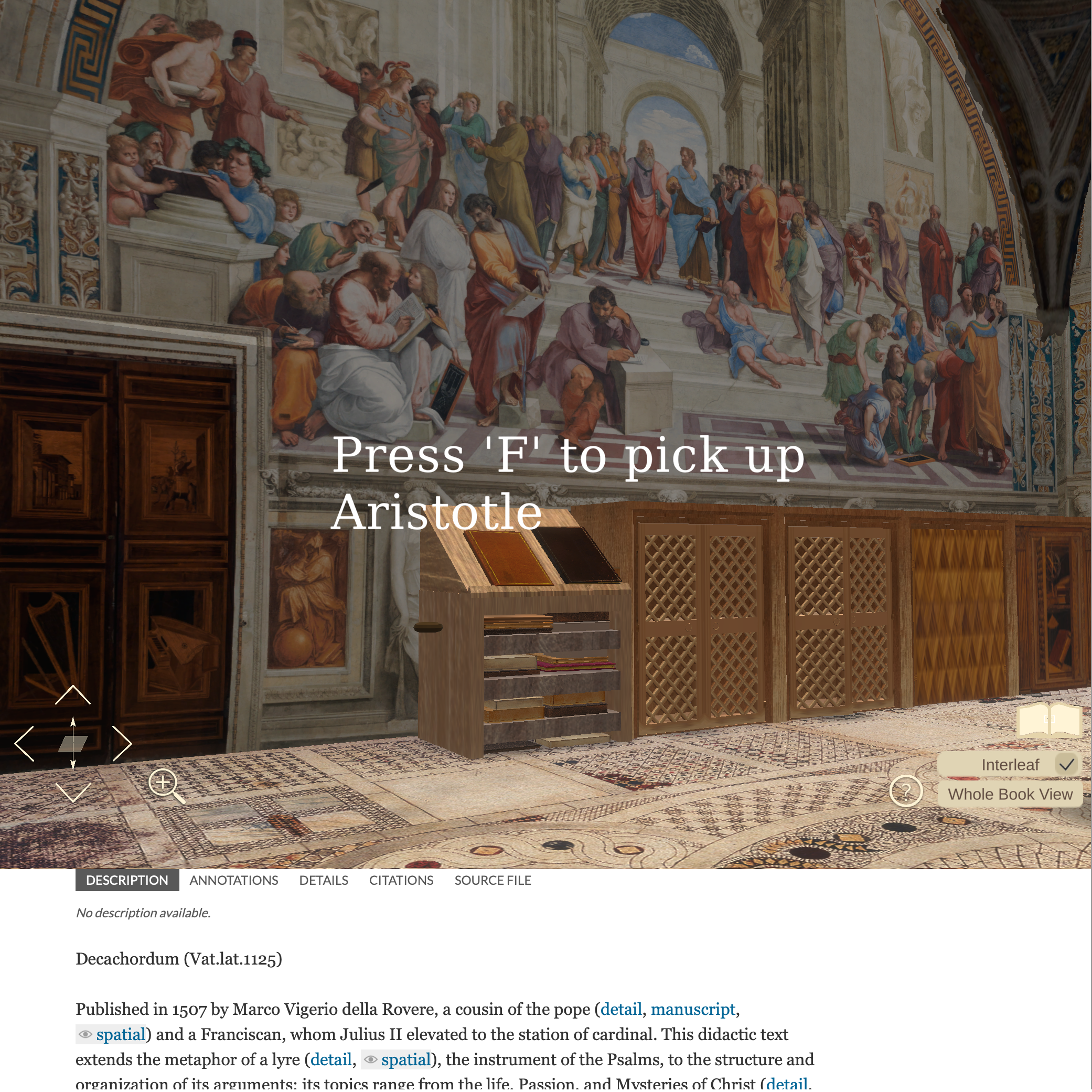
The 3D recponstruction embedded in a Scalar page, connected through the Unity-Scalar bridge.
Since its creation, the uses and arrangements of the Stanza della Segnatura — and many of the other rooms in the Vatican — have changed multiple times, rooms have been redecorated, repurposed, rebuilt. This means that, if we want to understand a specific moment in history and understand it from a more comprehensive point of view that includes the actions, environments and the tangible life reality of a certain historic moment, we can only approach that moment in a digital reconstruction. We do not have much sense of how people were reading in the Renaissance. We might know what they were reading, who was reading, and maybe why, but we do not have a sense of the embodied act of reading, how people may have been engaging with others, how reading was part of an active discourse etc. The reconstruction in a virtual environment gives us a chance to begin to think about these important aspects of the intellectual history and culture.
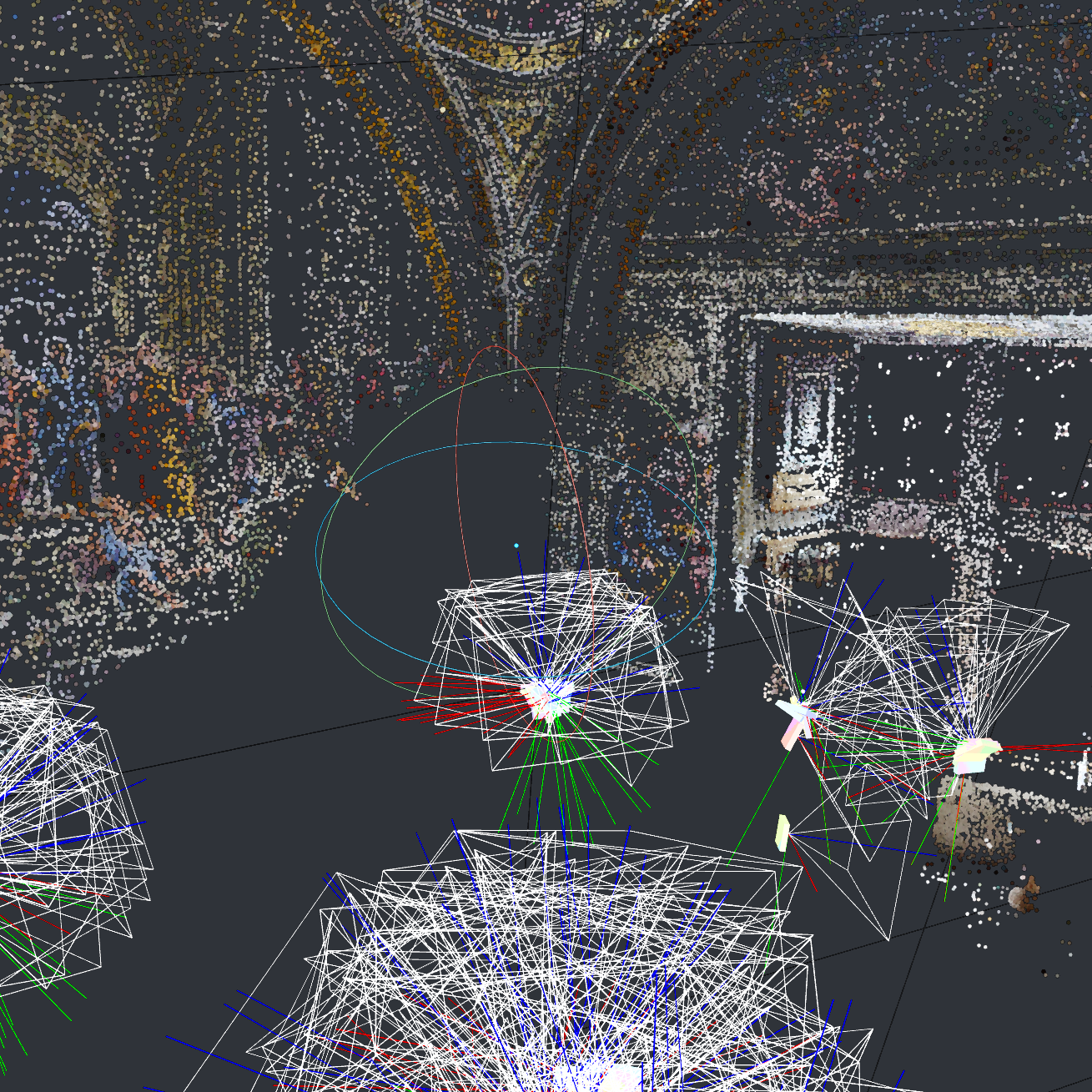
Calculation of a 3-dimensional point cloud of the Stanza della Segnatura.
Reconstructing Reading
In building the engine for the Immersive Raphael Project we are aiming to balance the immersiveness of the experience and the ease of engaging into a discourse about the room and its practices. Is a virtual representation of the room that is as realistic as possible the right approach - or should the experience be more like an editable media text that is always ready to take annotations and allow references? Our decision was to combine the two aspects as good as possible: We built an immersive recreation of the room using point-cloud scan of the actual room, running in a game engine that allows users to explore the room at will, pick up books, walk around with them and see how the pages catch the light shining through the windows. This interactive scene is embedded in a scholarly writing environment called Scalar, which allows to read and edit in a comfortable way as we are used to doing it on our computer screens. A specifically developed software bridge that connects Unity and Scalar establishes a bi-directional data flow between these two components. In this setup we can combine the hyper-textual links we know from the web with the hyperlinks of the Renaissance that connect physical books across the room with frescos and other books.
- Frederic Nolan Clark on Renaissance reading
- Tracy Cosgriff on Raphael’s portraits of books
- Andreas Kratky on designing the Bibliotheca Iulia Instaurata
- Lisa Pon on the Stanza della Segnatura as library
- Vatican Library Digitized: DigiVatLib.it
- Norton Simon’s Raphael 2020 Conversation
- Vatican Museums’ 360-degree Virtual Tours
External Links:
Past presentations
- June 2023: the Global Online SHARP Conference, hosted by the Centre for the Book at the University of Otago, New Zealand and organized by the Society for the History of Authorship, Readership and Publishing (SHARP), "Affordances and Interfaces: Textual Interactions Past, Present and Future": "Renaissance Hyperlinks: Pope Julius II's Books amid Raphael's Paintings," a research lab session led by Andreas Kratky and Lisa Pon.
- May 2023: the USC-Huntington Early Modern Studies Institute Seminar, "Paper and Other Early Modern Supports": "Unveiling the Bibliotheca Iulia Instaurata: Reading in a Renaissance Pope's Library," presented by Tracy Cosgriff at the Huntington Library, San Marino, CA.
- March 2023: Tulane University’s annual Terry K. Simmons Lecture in Art History: "Pages, Plaster, and Computer Screens: Reimagining Raphael and the Library of Julius II," presented by Tracy Cosgriff and Lisa Pon, in New Orleans, LA.
- February 2023: the annual conference of the California Interdisciplinary Consortium on Italian Studies (CICIS), "Hybrid: Digital Humanities and Italian Renaissance Art," presented by Lisa Pon at California State University, Long Beach, CA.
- June 2022: the Warburg Institute’s online workshop, "Between Technology and Theory: Digital Humanities Projects in Progress": "The Bibliotheca Iulia Instaurata," presented by Frederic Nolan Clark and Lisa Pon.
Project team
The Intellectual Historians
- Lisa Pon (University of Southern California; Art History; PI)
- Tracy Cosgriff (The College of Wooster; Art History; Co-PI)
- Frederic Nolan Clark (University of Southern California; Classics; Co-PI)
Undergraduate Assistants
- Olivia Benoit
- Isabelle Hoover
Graduate Assistants in Interactive Media at USC
- Yuwei Lin
- Jimi Stine
- Michael Wahba
- Hesi Mendez
- Jasmine Jupiter
- Christy Ye
- Jessica Dong
- Bernice Wang
- Shelby Zhang
The Tech and Media Arts Team
- Andreas Kratky (University of Southern California; Media Arts + Practice; Co-PI)
- Curtis Fletcher (University of Southern California; Ahmanson Lab; Co-PI)
- Erik Loyer (University of Southern California; Annenberg Innovation Lab; Co-PI)
Consultants and Advisors
- Alexander Nagel
- David Lines
- Tara McPherson
- Francesca Fiorani
- Earle Havens
- Worthy Martin
- Arnold Nesselrath
- Margaret Haines
- Bill Sherman
Funding
- USC Ahmanson Lab Collaboratory (2019-20)
- USC Office of Research: Zumberge Collaboration Grants (2019, 2020)
- NEH Digital Humanities Advancement Phase II Grant (Jan 2020-Dec 2023)

